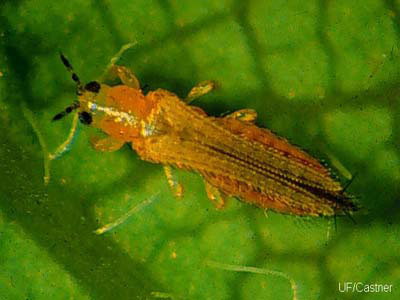
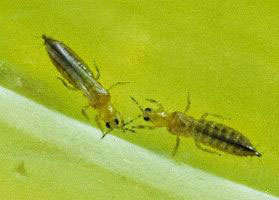


This oblong shaped insect is 1-2 mm. On the enlarged picture the color makes it good visible. But in real life it looks pale gray. This animal also has a stitch snout and feeds on the leave cell juices which they destroy by stabbing the cell. In contrast to lice they don't fill the cell with saliva, but fill it with air. After some time getting the plant a grayish and withered appearance because all cells are drained. These insects can move easily and cause a lot of damage.
The thrips lays its eggs in the leaf tissue. They hatch after 8 days. The young larvae are whitish in color and live in groups together, at a later stage they spread over the leaf. After 14 days there pupation starts.
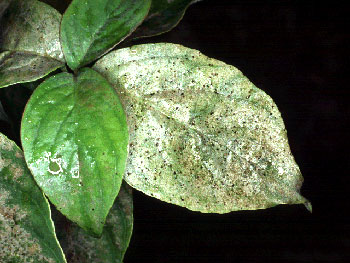
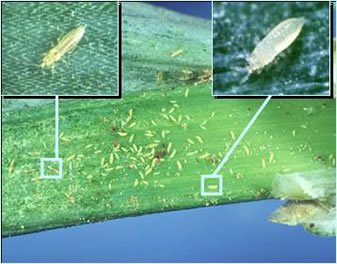

Since these animals prefer a low humidity your plants are not as prone to this plague (see breeding methods). Especially houseplants with soft and thin leaves that stand near central heating are a popular victim. The most common species of thrips are the Striped greenhouse thrips (Parthenothrips dracanae) and Tabaco thrips (Thrips tabaci). The California Thrips (Frankliniella occidentalis) is particularly difficult to get rid of because of its high resistance to various insecticides.
Treatment:
First important thing is to try to increase the humidity to 75-80% because the plague then at least spread less rapidly. Thrips does not like high humidity. This alone will not be enough to get rid of the animals. Rinse with water and a solution of mild yellow soap (20g p liters) and 10cc fuel alcohol (methanol) is a simple solution. If this gives not the desired result, the following resources may help.
Insecticides as:
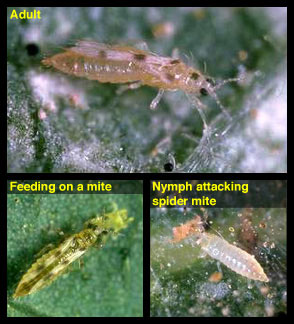
Organically treatment can be attempted with the asassinbugs. These animals can be purchased from specialized companies. They feed on insects like thrips but also feed on mites.